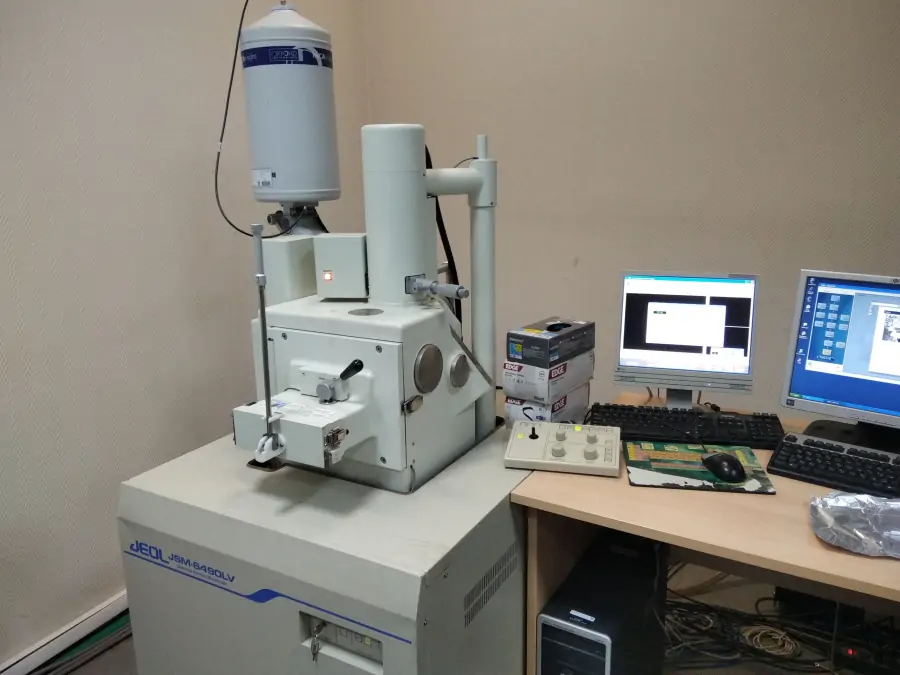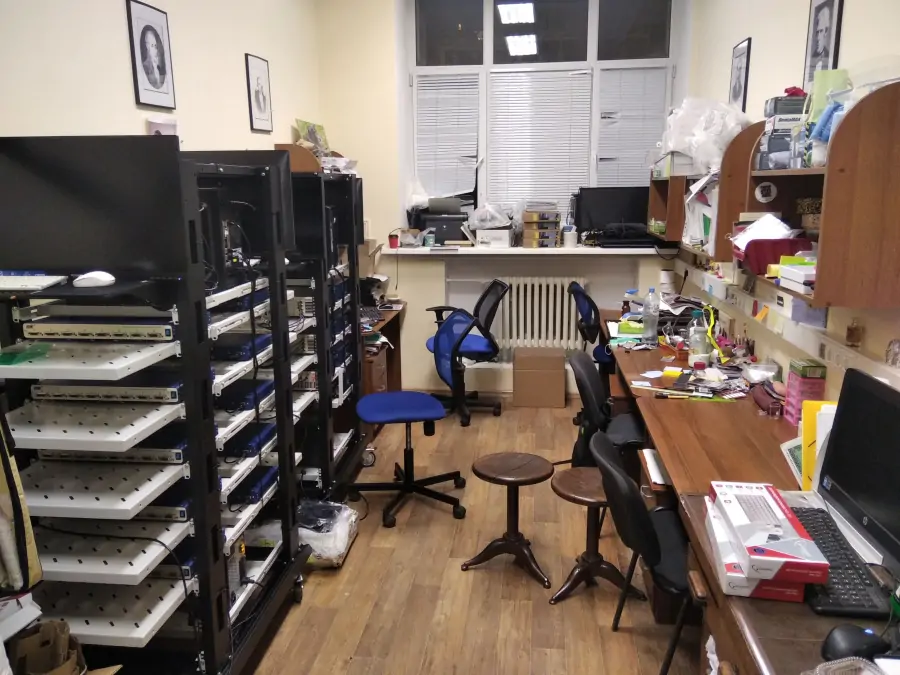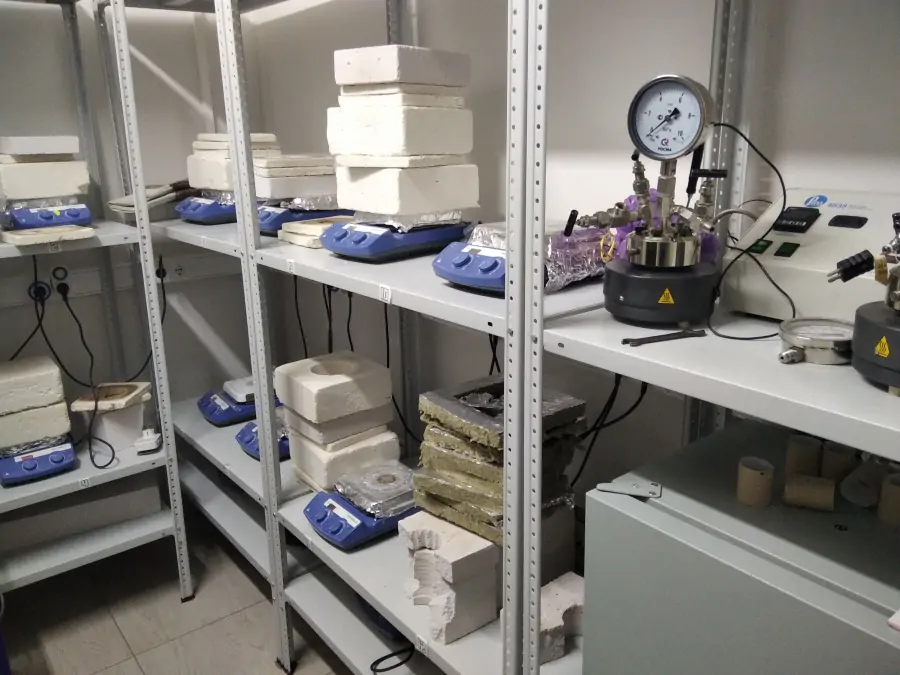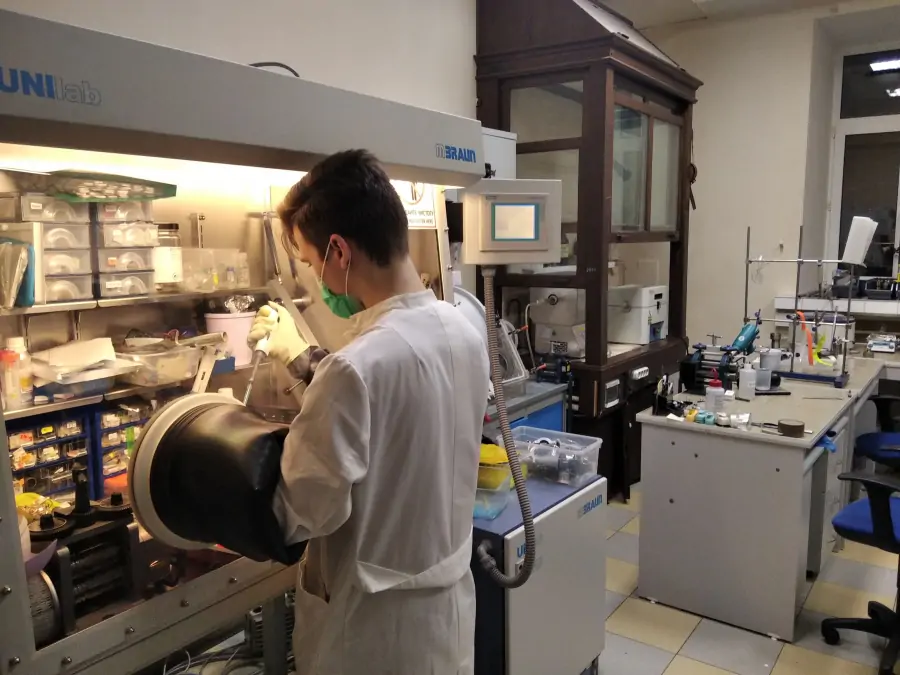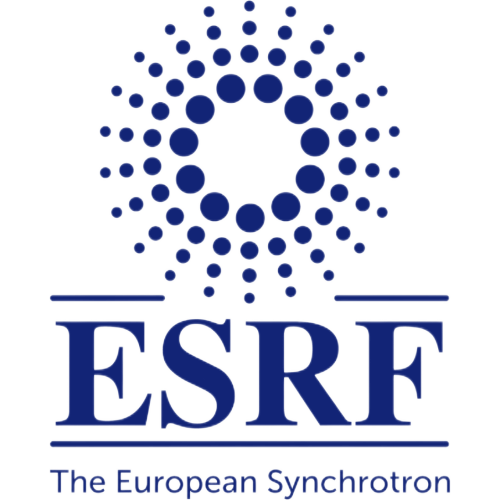Laboratory of Materials for Electrochemical Processes
Head of Laboratory
Evgeny V Antipov
DSc in Chemistry, professor, full member of the Russian Academy of Sciences
Publications
463
Citations
10 565
h-index
49
Authorization required.
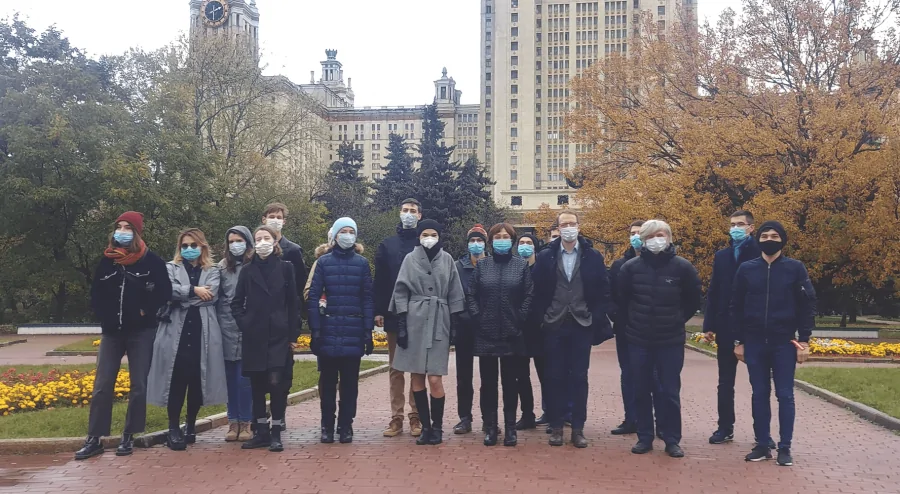
Development and study of inorganic materials that are used in electrochemical processes (in electrodes or electrolytes of various types of batteries). The work being carried out is based on a combination of the principles of materials science, inorganic chemistry and electrochemistry. Fundamental research is an integral part, and most of the studied objects are planned to be used in real devices in the foreseeable (3-10 years) future.
- Various types of inorganic syntheses: hydro (solvo) thermal, sol-gel, solid-phase
- X-ray phase analysis
- Scanning electron microscopy (SEM)
- Electrochemical research, including operando diffraction and spectroscopic experiments
Evgeny Antipov
Head of Laboratory
Oleg Drozhzhin
Senior Researcher

Anastasia Alekseeva
Senior Researcher
Eduard Levin
Researcher
Emiliya Zharikova
Junior researcher
Ruslan Samigullin
Junior researcher

Vladislav Grigoryev
PhD student

Tatyyana Perfilyeva
PhD student
Denis Lutsenko
PhD student
Evgeny Boltkov
PhD student
Andrei Marenko
Student
Maksim Nestruev
Student
Maria Apostolova
Student

Aleksandra Zybina
Student
Research directions
Scaling of synthesis methods and prototyping of metal-ion batteries
+
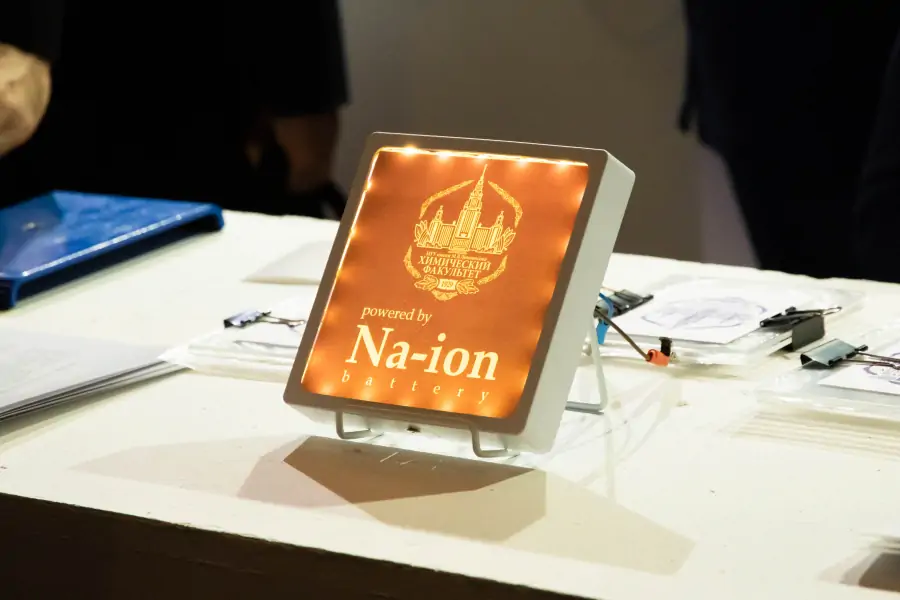
Cathode materials with an olivine structure for the next generation of high-power batteries are now being produced within the framework of the Rustor startup, created jointly with the Skolkovo Institute of Science and Technology. Prototypes of sodium-ion batteries based on four types of materials developed in our laboratory at the Faculty of Chemistry of Moscow State University were presented at specialized exhibitions in 2019 and 2020 (example in the figure).
Development of experimental approaches for in situ and operando research methods
+
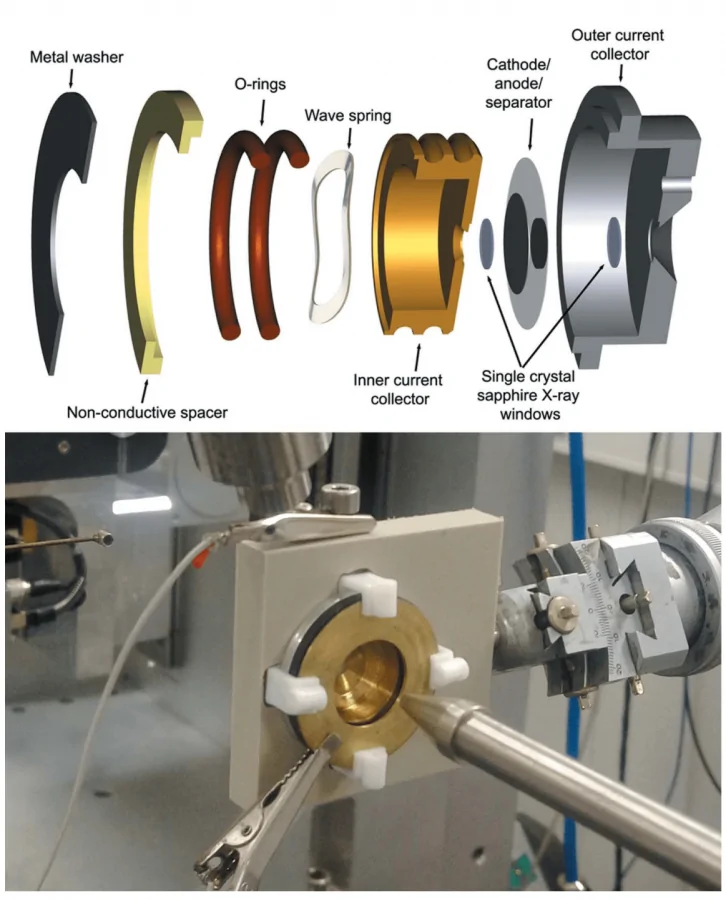
A number of electrochemical cells have been developed and successfully tested for conducting operando studies using X-ray powder diffraction, synchrotron X-ray diffraction and X-ray absorption spectroscopy, neutron powder diffraction, and Mossbauer spectroscopy. The figure shows a diagram of one of these cells.
Synthesis and research of cathode and anode materials for metal-ion (lithium-ion, sodium-ion, potassium-ion) batteries
+
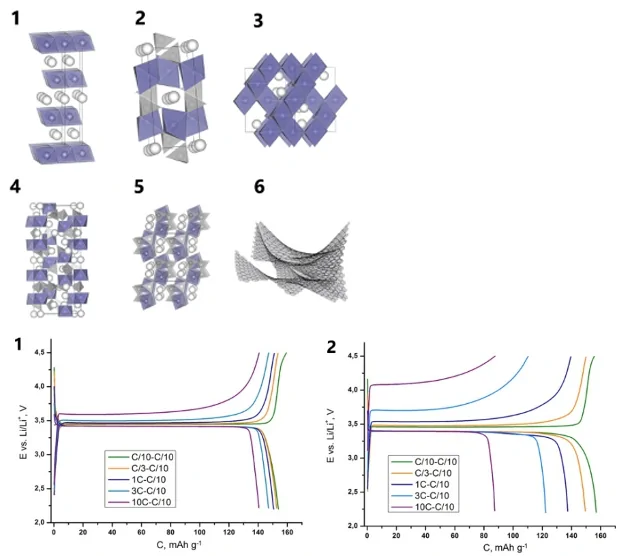
The figure above shows the crystal structures of the main types of materials with which we work: 1 – layered oxides, 2 – phosphates with the structure of olivine, 3 - oxides with the structure of spinel, 4 – phosphates with the structure of NASICON, 5 – pyrophosphates with the structure of KAlP2O7, 6 – "solid carbon". The figure below shows the electrochemical characteristics in the "fast charge — slow discharge" mode of LiFePO4 phosphates (LFP) obtained by the method of solvothermal synthesis in our laboratory (1) and a commercially available analog (2). These materials are used as cathodes of safe and high-power lithium-ion batteries.
Publications and patents
Found
Nothing found, try to update filter.
Дрожжин О.А., Тетров И.В., Алексеева А.М., Антипов Е.В.,
RU2718878C1,
2020
Абакумов А.М., Дрожжин О.А., Суманов В.Д., Антипов Е.В., Стивенсон К.Д.
RU2684895C1,
2019
2021
—
2023
| Антипов Евгений Викторович
2019
—
2022
| Дрожжин Олег Андреевич
2017
—
2020
| Антипов Евгений Викторович
Lab address
Химфак МГУ к. Ц10, этаж цокольный
Authorization required.




